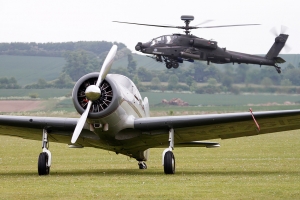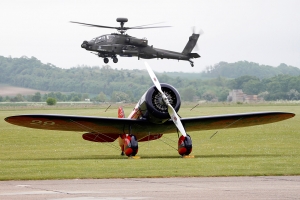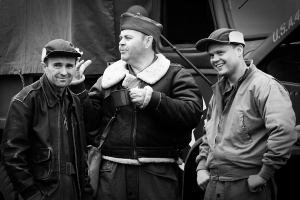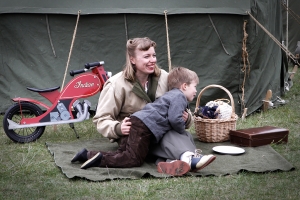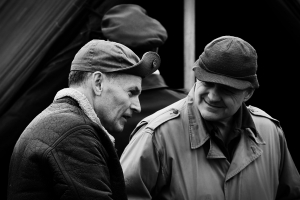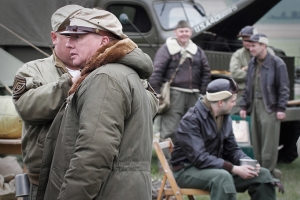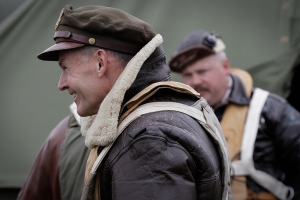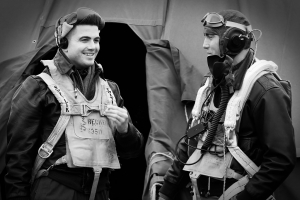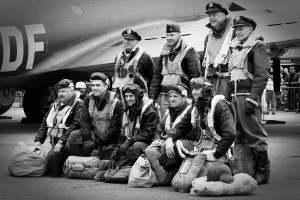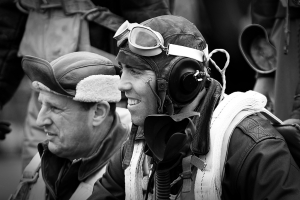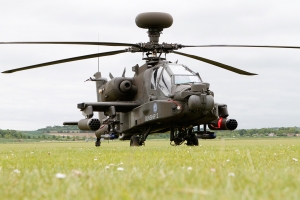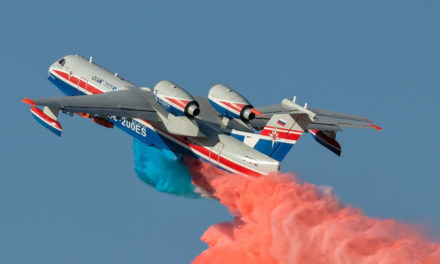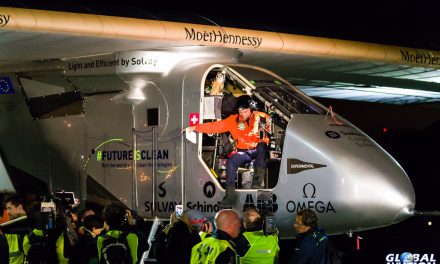In a year of significant anniversaries, IWM Duxford kicked off its season commemorating the events of 70 years ago, when Victory in Europe was achieved. Shaun Schofield reports for GAR.
It’s probably fair to say that no other airshow venue is so well suited to hosting an anniversary airshow quite like Duxford, something undoubtedly reflected by the pre-show line up, featuring a wide and varied range of aircraft that played key roles to ensure an allied victory, as well as a smattering of their modern contemporaries that continue to protect the freedom their forerunners fought so hard for. There was great potential for an excellent show, and Duxford duly delivered.

The VE Day flypast was the centrepiece of the show © Shaun Schofield – Global Aviation Resource
Living history groups are regular and welcome features of Duxford shows, with more than ever scattered throughout the showground, recreating the party atmosphere of the day. Wherever one looked, there were re-enactors, wartime singers and music, and of course, plenty of bunting!

Living history groups add real atmosphere to Duxford shows © Shaun Schofield – Global Aviation Resource
In the air, spectators were treated to several season debut displays from the armed forces, most notably the Royal Air Force Typhoon solo and Army Air Corps Apache pair. We’ve extensively covered the superb camouflaged ‘Hurriphoon’ in our RAF Synchro pair article, and it was great to see the jet being used for the solo too, on the Saturday at least, with the 29 (Reserve) Squadron Centenary jet flown on the Sunday.

Jonny lights the burners in his aggressive Typhoon display © Shaun Schofield – Global Aviation Resource
First impressions for this year’s routine are good, very good in fact, with Flt Lt Jonny Dowen squeezing the most out of the jet’s supreme performance, as well as the moisture in the damp air that seems to have accompanied the Typhoon this season, producing liberal amounts of ‘spluff’ during the effortlessly tight turning and burning manoeuvres. The routine appears a little more aggressive than previous years, and Jonny will undoubtedly star wherever he displays throughout the season.
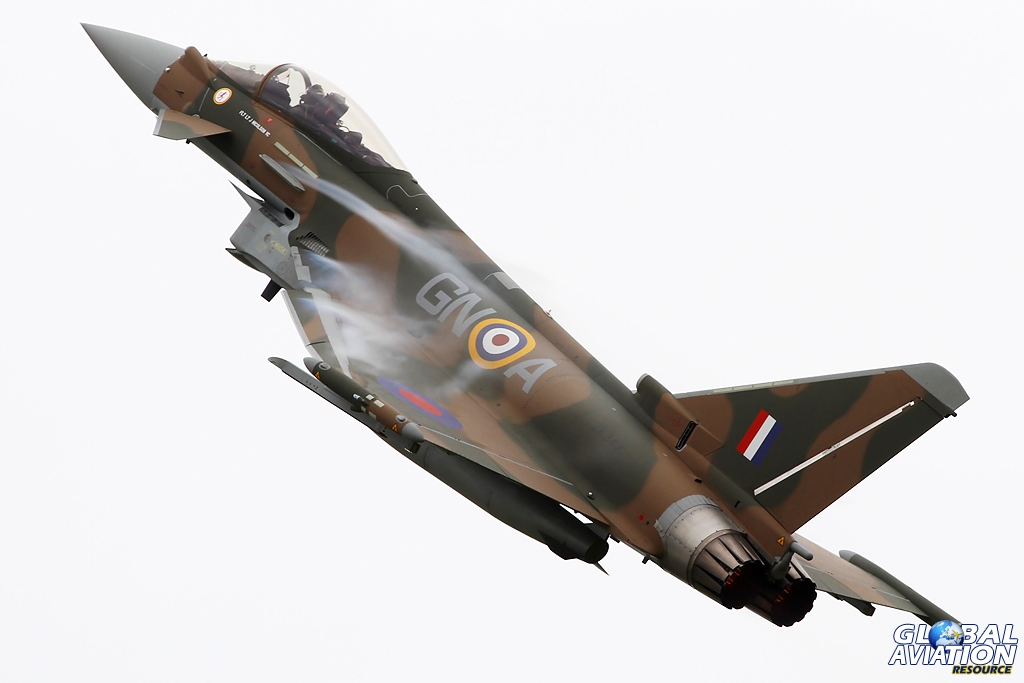
If there is any consolation from displaying in damp conditions, it is spluff! © Shaun Schofield – Global Aviation Resource
The prospect of two Apaches displaying together, a first for the AAC, was a mouth-watering one, which again lived up to the pre-show anticipation. The routine provided an interesting insight into the roles the aircraft undertake and the teamwork involved to successfully complete them, as well as demonstrating the agility and sheer presence of this brute of a helicopter. Sadly, there were no accompanying pyrotechnics that will enhance the display at other venues this year, an inclusion that will surely turn a good display into a great one.

Gunship 2 waits patiently on the flightlien ahead of its maiden display © Shaun Schofield – Global Aviation Resource
Further RAF participation came in the form of the Red Arrows, displaying on the Sunday only as the team embark on another busy season. A regular of recent Duxford shows, ‘B’ flight of 22 Sqn based at Wattisham once again provided a Sea King HAR3 to provide its usual search and rescue demonstration. It was to be the final appearance of the type at Duxford, as the type’s imminent retirement looms ever closer.
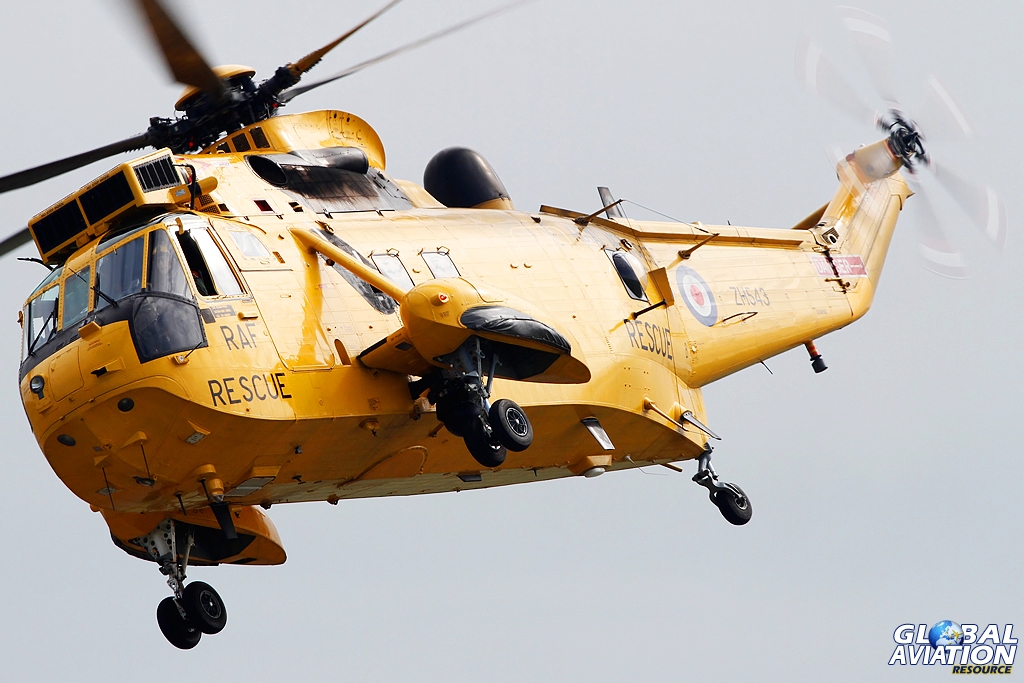
A farwell display for RAF Search and Rescue Sea Kings at Duxford © Shaun Schofield – Global Aviation Resource
The Red Arrows were not the only display team on show, with the RV8tors bringing their brand of precision formation aerobatics to the proceedings on the Saturday. Alister Kay and Andy Hill are true masters of the art, as are Paul Bonhomme and Steve Jones, the Red Bull Matadors, who managed to find time in their busy schedule to display their two incredibly agile XtremeAir XA41.

The Matadors demonstrate their supreme close formation flying © Shaun Schofield – Global Aviation Resource
Of course, the main focus of the show was the anniversary. The story of how the war in the air was won was told brilliantly, chronologically focusing on the events that preceded the war right through to the final victory, covering all the major roles undertaken and featuring new and unique combinations of aircraft, some of which wouldn’t have been seen together for many years, if at all.

A flightline unique to Duxford © Shaun Schofield – Global Aviation Resource
The story began with the very early aircraft of World War One. The Duxford based Nieuport 17 was joined by the Shuttleworth Collection’s Bristol F.2B and The WW1 Aviation Heritage Trust’s BE2e, the latter, a stunning reproduction of the famed The Vintage Aviator Ltd in New Zealand, making its Duxford debut. Although not directly relevant to VE Day, the three represented early aircraft design that paved the way for the air wars of World War Two and as such, their inclusion was more than apt, and whilst the Nieuport sped around the airfield (relatively speaking of course for the type!) the ‘Brisfit’ and BE2e played a gentle game of follow the leader.

It was refreshing to see the Shuttleworth F.2B spread its wings and display away from Old Warden © Shaun Schofield – Global Aviation Resource
Moving forward a decade or so, the peaceful interwar period saw the emergence of a range of executive and racing aircraft. Representing this era were three fine looking aircraft; The Fighter Collection’s (TFC) Staggerwing, which got a rare appearance outside of a Flying Legends show, was joined by two newcomers to Duxford in the form of Nigel Packard’s stunning Spartan Executive and Richard Seeley’s delightful Travel Air Mystery Ship replica. After arriving on slot as a three ship, the two transports took centre stage with a series of loose formation flypasts, before making way for the nimble, and very quick Mystery Ship.

A delightful line up showing the beautiful lines of 1930s aircraft design © Shaun Schofield – Global Aviation Resource
Demonstrating the contemporary fighter design of the same time was something very special indeed. After what seems an age since making its post restoration flight in 2012, the public at Duxford were finally treated to the debut display of the Historic Aircraft Collection’s (HAC) quite simply stunning Hawker Fury. Teaming up with Shuttleworth’s Gladiator, the pair represented the pinnacle of biplane fighter design.

One of many highlights as the Fury and Gladiator paired up © Shaun Schofield – Global Aviation Resource
After a handful of formation passes, the Gladiator was run through a typically gentle sequence, its Bristol Mercury purring as it went, whilst the Fury held to the North, gaining height. With the stage set, Charlie Brown dived in to begin a masterful display full of tight loops and turns. The agility of the aircraft certainly took this spectator by surprise! It may have been a long time coming, but it was well worth the wait; comfortably one of the highlights of the show.

A flawless restoration, the Fury really is a thing of beauty © Shaun Schofield – Global Aviation Resource
However, even this was soon to be topped, as the story moved into the early years of World War Two, specifically the Battle of Britain. Duxford’s September show will commemorate the 75th anniversary of the battle in epic style, but it would have been remiss for this show to have ignored it in such an important anniversary year. HAC’s Hurricane XII, freshly painted in its new 303 (Polish) Squadron colours, opened the segment, representing, arguably, the most important RAF type to have participated in the battle, before making way for the main event.
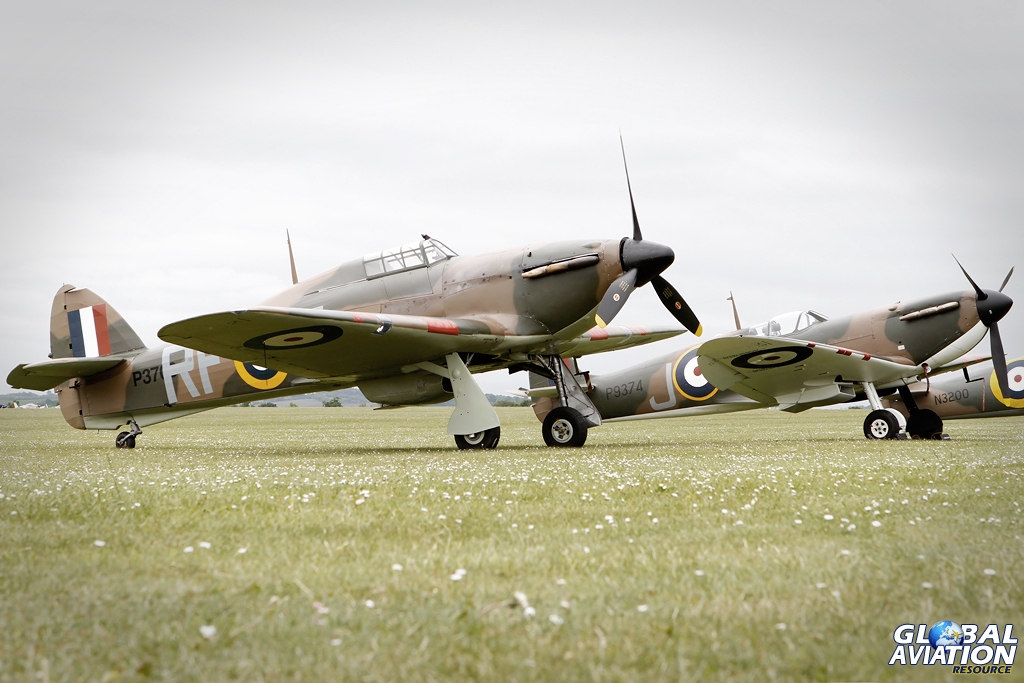
HAC’s new look Hurricane © Shaun Schofield – Global Aviation Resource
The honour was given to the Aircraft Restoration Company (ARCo), whose two impeccable Spitfire Mk.Is were joined by the absolute star of the show, their newly restored Blenheim Mk.IF. In its first public appearance in 12 years, John Romain led Cliff Spink and Lee Proudfoot through a delightful series of formation passes, a sight surely not seen since 1940. Ben Dunnell, whose commentary was as excellent and informative as ever, put the microphone down, so that the glorious sound of two Mercuries and two Merlins, and N3200’s distinctive whistling, was all that disturbed the piece. A truly magical moment.

The magnificent Blenheim, back in the air where she belongs © Shaun Schofield – Global Aviation Resource
With the trio safely landed, the Battle of Britain Memorial Flight made an appearance with their Dakota III. It’s probably not too much of an exaggeration to say that the war could not have been won without this most important of aircraft, and its inclusion in the show could not have been more appropriate. The Dak was swiftly followed by a somewhat unusual pairing, the word swiftly being both apt and ironic, as Richard Grace laid siege to Peter Holloway’s immaculate Fiesler Storch in Mark Davy’s ferocious Yak-3 ‘White 100.’
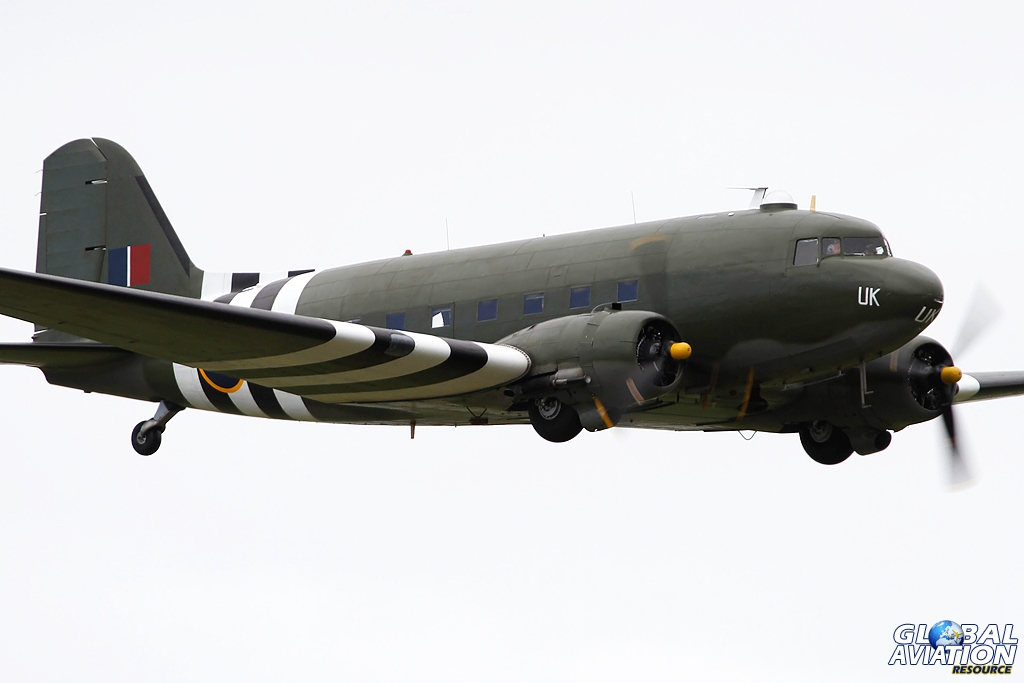
The legendary Dakota, a vital cog in the Allied war machine © Shaun Schofield – Global Aviation Resource
In fact, the pairing is not as unlikely as it might first seem. During the Soviet advance on Berlin in the latter stages of the war, a Yak-3 engaged and shot down a Storch over the Tiergarten, and this display re-enacted the scenario. Whilst the Storch demonstrated its frankly outrageous slow speed handling, the Yak repeatedly dived in at phenomenal speed in an attempt to get the ‘kill.’

The Yak hones in on the Storch in a seemingly one sided contest © Shaun Schofield – Global Aviation Resource
Richard Grace is no stranger to Duxford, having displayed with the TRIG Pitts team and of course the Grace Spitfire on numerous occasions. For me however, it is when he gets at the controls of the Yak where he really flourishes, comfortably flying faster and lower than any other warbird on show in a truly spectacular demonstration of man and machine in perfect harmony.
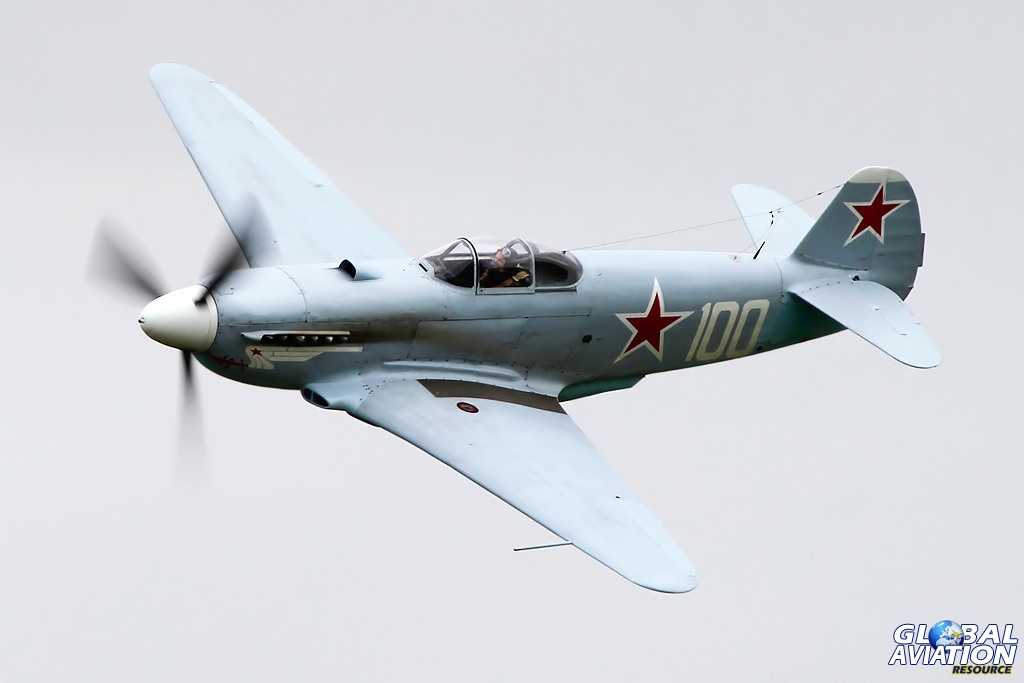
Richard Grace wrings the life out of the mighty Yak-3 © Shaun Schofield – Global Aviation Resource
Having (thankfully!) failed on this occasion to get the kill, Richard returned to terra firma, whilst the Storch was joined by Jan Fraser’s L-4 Grasshopper and David and Mark Miller’s Auster. The trio represented the three primary examples of army cooperation aircraft used throughout the European campaign, in an often unsung but vitally important role. In fact, it is often said the L-4 directed more firepower than any other weapon in the war.
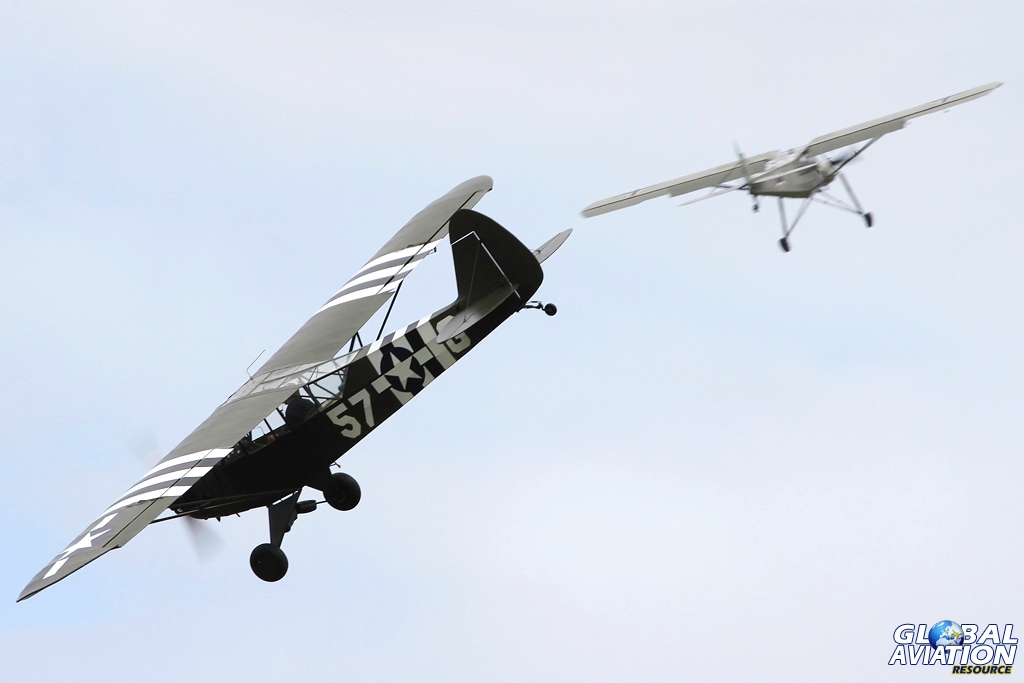
Air oberservation aircraft played a pivotal role for both sides © Shaun Schofield – Global Aviation Resource
It goes without saying that training and transport played an important role throughout war, for obvious reasons. These were represented in the flying display by The Miller family’s flawless Dragon Rapide and the Classic Air Force’s (CAF) Avro Anson, which flew a gentle tailchase, before Pete Kynsey and Anna Walker’s Cosmic Wind and ARCo’s Beaver provided an additional contemporary display.
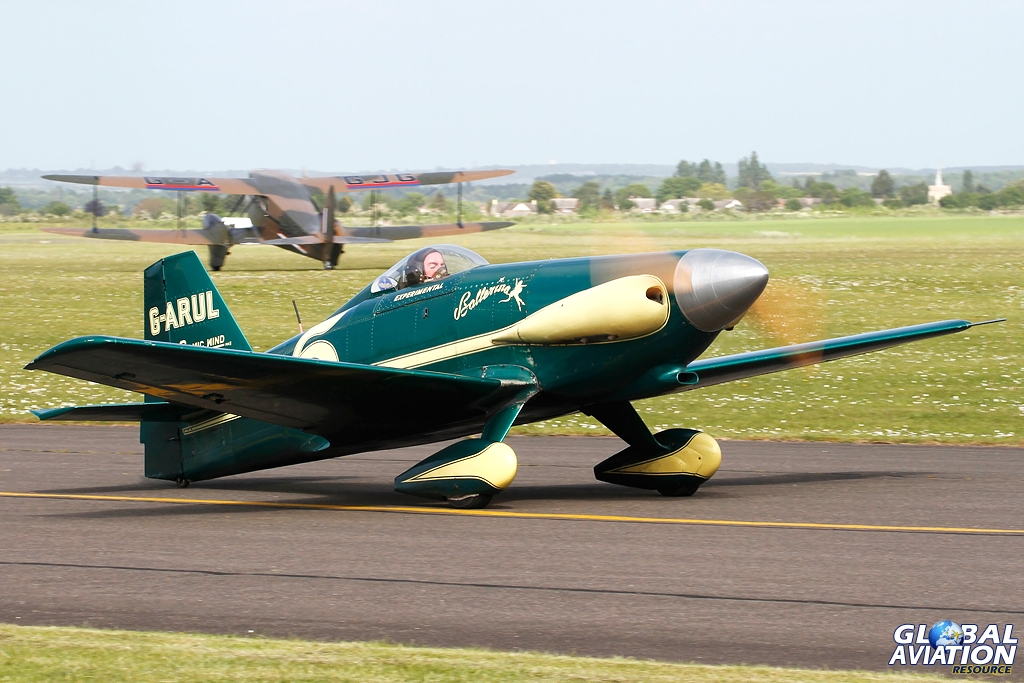
Richard Grace clearly enjoys himself whenever he straps into the Cosmic Wind © Shaun Schofield – Global Aviation Resource
The Anson was not the only CAF aircraft on show, as Jon Corley piloted their beautiful Meteor T7. In homage of the early jets that entered service in the latter years of the war, the Meteor was flown in an especially graceful manner, perhaps more suited to the photographers on the crowd who love a gratuitous topside pass or four!

Classic Air Force’s Meteor, such an elegant jet © Shaun Schofield – Global Aviation Resource
Before the grand finale, there was one more act to display. VE Day did not signal the end of the war of course, with three more months of fighting continuing in the Far East against Japan. In honour of this, TFC sent up a trio of their heavier warbirds; the Wildcat, Corsair and P-40F. Arriving as a threesome for a single pass, the Wildcat broke off and, with Dave Southwood at the controls, proceeded to fly an aggressive, punchy routine, unbefitting of the aircraft’s ungainly appearance, especially when on the ground.
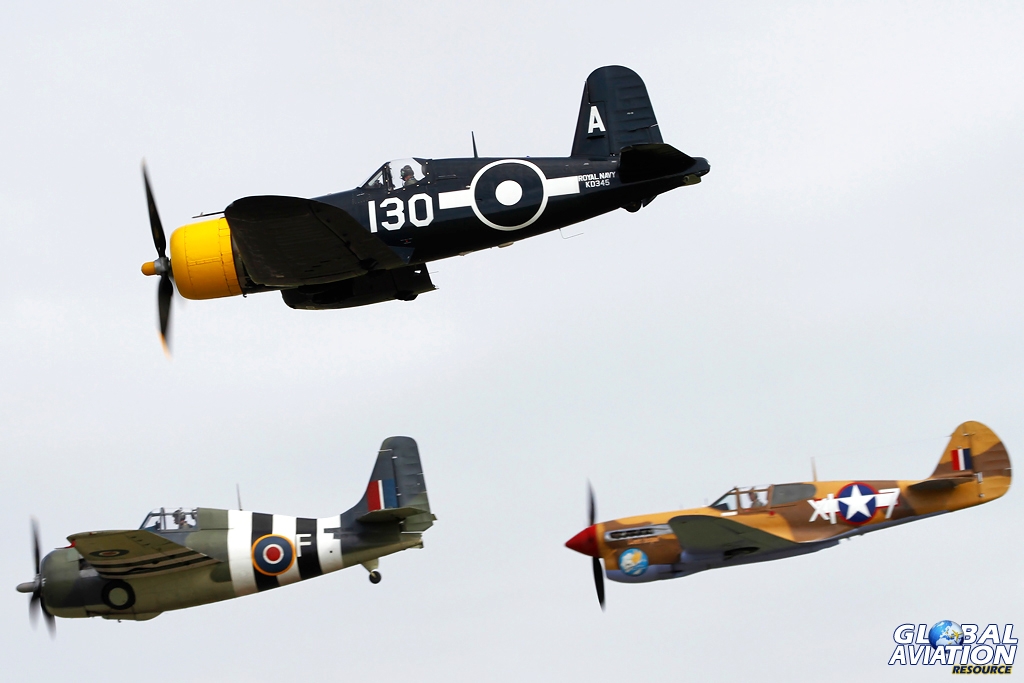
The Victory in Japan was also marked courtesy of The Fighter Collection © Shaun Schofield – Global Aviation Resource
Carl Schofield soon followed in the P-40F, arriving with plenty of gusto with a fast pass that would knock your socks off. In an all too short display, this and the Wildcat departed to meet up with the gaggle of aircraft that had taken off during their display in preparation for the final piece. This left the stage clear for the Corsair. Like Richard Grace in the Yak, Brian Smith seems most at home in this mighty fighter, giving a powerful performance in a joker-esque routine, akin to Flying Legends displays, whilst the Balbo forms up.
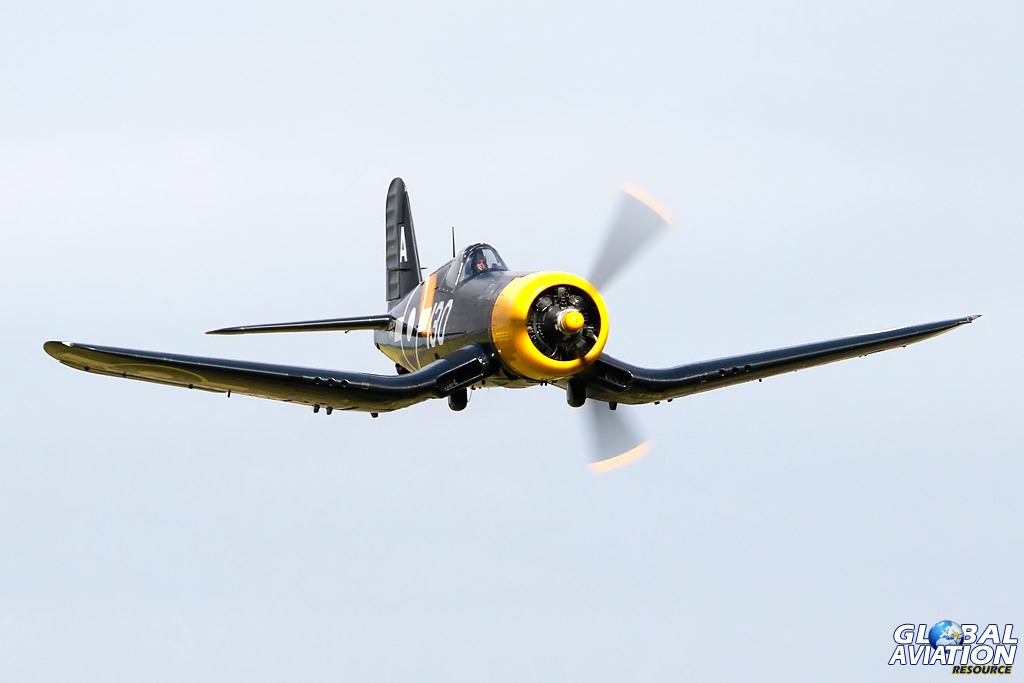
The classic shape of the Corsair is evident as Brian Smith thunders into his routine © Shaun Schofield – Global Aviation Resource
This balbo, led by B-17G ‘Sally B’ and featuring the aforementioned P-40F and Wildcat and a trio of Mustangs, ahead of a heavy formation of Catalina, C-47 and Beech 18, would provide a poignant tribute to the events of 70 years ago. It was a spectacular sight, especially as ‘Sally B‘ doesn’t tend to take part in too many mass formations these days; certainly a moment to savour.

Sally B leads the fighters in a poignant flypast © Shaun Schofield – Global Aviation Resource
As most of the aircraft landed on, the Mustangs began their sensational tailchase. Pete Kynsey led the way in TFCs ‘Miss Velma’ with Steve Jones bringing up the rear in the Old Flying Machine Company’s ‘Ferocious Frankie’. The number two in the chase was an old friend returning to Duxford in a very different guise. ‘Old Crow’ was a familiar sight at UK airshows for many, but after a lengthy and thorough service, has re-emerged in RAF colours, complete with shark mouth! Now operated by the Norwegian Spitfire Foundation and piloted by Lars Ness, the aircraft made a welcome return to the display circuit.
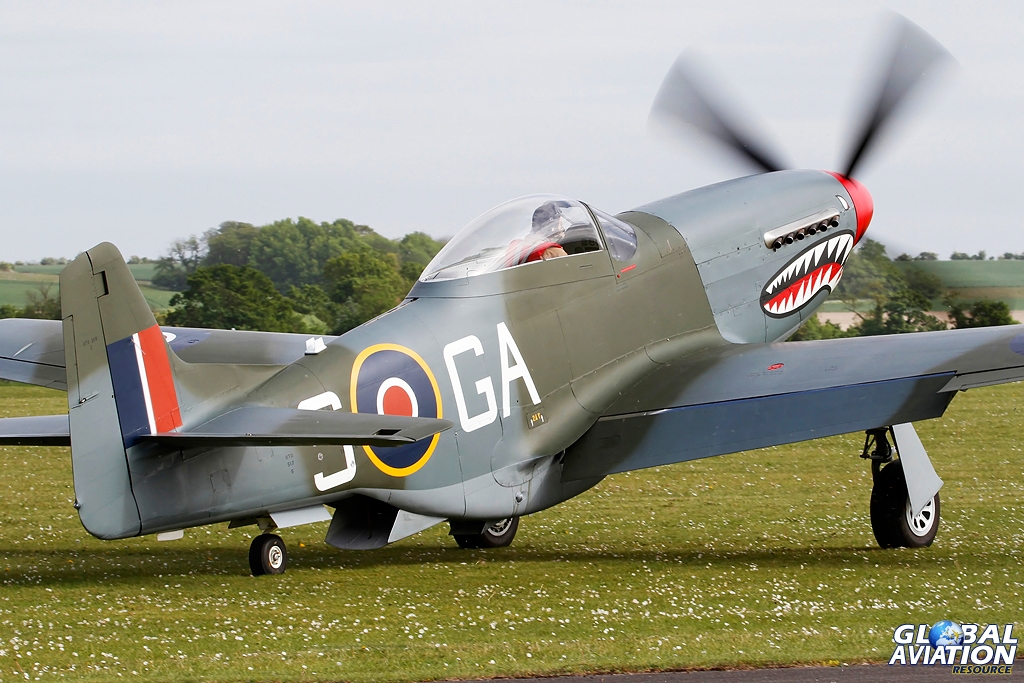
The RAF Colour schem and shark mouth really sets the Norwegian Mustang apart © Shaun Schofield – Global Aviation Resource
The tailchase itself was a thing of a beauty, with ‘Miss Velma‘ leading the trio through a series of fast passes and big wing overs. The speed and power of the Mustang never fails to impress, but it is the soundtrack that really grabs the attention, the combination of the glorious Merlin engine and the screaming gun ports creating a sound like no other. Absolutely scintillating flying.

The gaggle of Mustangs power into the air © Shaun Schofield – Global Aviation Resource
After the shock and awe of the Mustangs, the honour of closing the show could not have been more appropriate, for ‘Sally B‘ was also celebrating her 70th anniversary and, incredibly, the 40th anniversary since her arrival at Duxford. A true stalwart of the UK airshow scene, and flying memorial to all US airmen lost during World War Two, there was no more fitting an aircraft with which to bring the show to a close.

Sally B’s final flypast, bringing an end to a fine day of flying © Shaun Schofield – Global Aviation Resource
Fantastic flying and superb variety, the VE Day anniversary show delivered in spades. Duxford’s season has got to a fine start indeed, a standard it will no doubt continue to maintain throughout the year.


